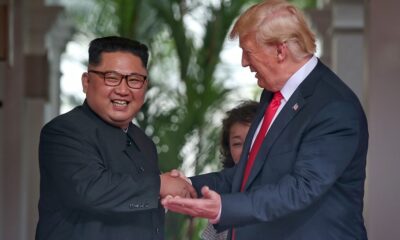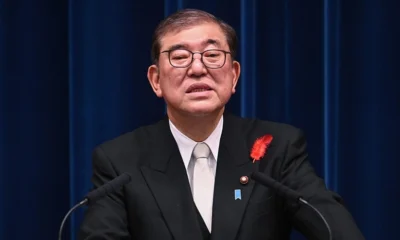Asia
Japan’s Prime Minister Kishida, rocked by corruption scandals, to step down
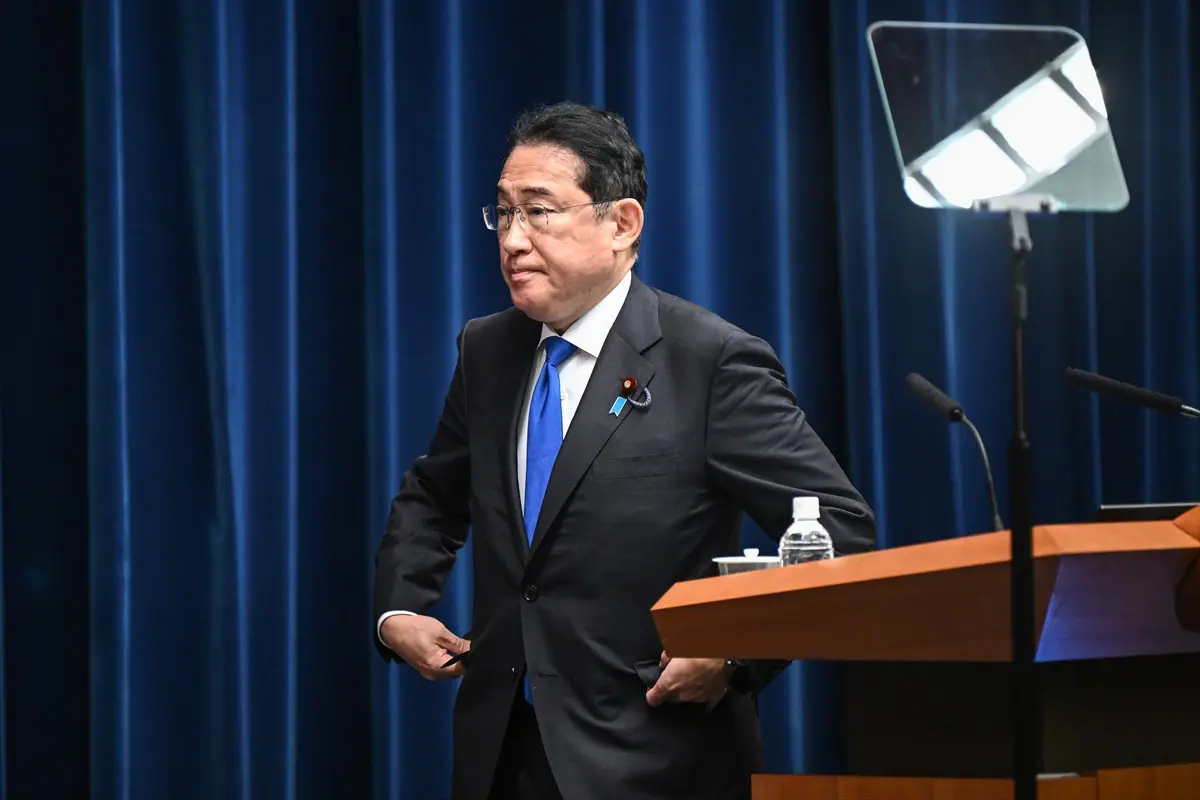
Japanese Prime Minister Fumio Kishida announced on Wednesday that he would step down after the ruling Liberal Democratic Party (LDP) elects a new leader next month, taking ‘responsibility’ for a months-long political funding scandal.
The party leader serves as prime minister when the party has a parliamentary majority. Speaking at a surprise press conference, Kishida said he would not stand for re-election as party leader in a vote scheduled for next month.
“It is necessary to show the public the new, changed LDP,” Kishida told the press conference, adding: “The first and most obvious step to show that the party is changing is for me to step aside”.
Kishida said the political funding scandal was the deciding factor.
“I have no hesitation in taking responsibility for the problems caused by members of my party. Now that there is a short gap in my diplomatic programme, I would like to make a clean break by resigning and proceed with the leadership vote,” the Japanese prime minister told reporters on Wednesday.
The prime minister’s comments put an end to weeks of speculation about whether he would run for the LDP leadership again, amid growing concern within the party that the current government may not be able to win the next lower house election in October next year.
Kishida has been struggling for months with record-low approval ratings for his cabinet and the LDP’s losses in local elections, fuelled by public frustration over the way the party raises and manages money for political purposes.
The Kishida-led LDP has been rocked since December last year by revelations of its ties to the scandal-plagued Unification Church and a scandal over the use of political funds by party factions, which have shaken public confidence in politics.
According to a Nikkei poll, the cabinet’s approval rating hovered around 20 percent for eight consecutive months until July, down from 60 percent when Kishida took office in late 2021.
Kishida declined to comment on who he would support in the upcoming LDP leadership race, but said: “I hope [my successor] will have a reform mindset and not return to old ways. We must continue to reform political financing and restore public trust in politics”.
In June, Kishida oversaw the passage of an updated political funds law aimed at curbing lawmakers’ use of party funds. Opposition lawmakers argued that the new law lacked teeth.
“No matter who the party leader is, the nature of the LDP has never changed,” Kenta Izumi, leader of the Constitutional Democratic Party, the largest opposition group in Japan’s parliament, told reporters on Wednesday, adding: ‘The public should not fall for this trick.
In his statement, Kishida underlined his efforts to revive Japan’s economy with his flagship ‘new capitalism’ policy after decades of deflation, weak inflation and slow growth. “During my three years as prime minister and party leader, I ended the deflationary economy and revived the ‘animal spirits’ of raising wages and promoting investment,” he said.
His unexpected statement had no immediate impact on Japanese financial markets. The Nikkei average fell slightly before Wednesday’s morning close when Kishida said he would step down, but the index ended the day up 0.58%. The yen briefly hit a one-week high, trading at 146.07 against the dollar before midday.
At the press conference, Kishida also highlighted his diplomatic achievements, such as hosting the G7 summit last year and strengthening security ties with the US and South Korea.
Following Kishida’s statement, US Ambassador to Japan Rahm Emanuel X praised the prime minister’s ‘decisive leadership’ in a statement.
“Prime Minister Kishida has helped build a network of security alliances and partnerships in the Indo-Pacific region that will stand the test of time,” Emanuel said.
Among those expected to succeed Kishida are former party secretary general Shigeru Ishiba, current economic security minister Sanae Takaichi, digital minister Taro Kono and former environment minister Shinjiro Koizumi.
Ishiba was the most popular choice among respondents in a Nikkei poll at the end of July, followed by Koizumi, the son of former prime minister Junichiro Koizumi.
The LDP leadership election is scheduled for 20-29 September, with the date to be announced on 20 August.
Asia
Chinese navy chief and top nuclear scientist expelled from legislature

The chief of staff for the People’s Liberation Army (PLA) Navy, Vice Admiral Li Hanjun, and Liu Shipeng, the deputy chief engineer of the state-owned China National Nuclear Corporation, were removed from their positions in the country’s legislative body.
Li is the latest in a series of PLA generals and a handful of defense industry executives implicated in a widespread investigation within the military.
In a statement on Friday, the NPC Standing Committee announced, “The Navy Soldiers’ Congress has decided to remove Li Hanjun from his post as a representative to the 14th National People’s Congress.”
The Gansu People’s Congress also dismissed Liu Shipeng from his role as an NPC deputy.
Additionally, the Standing Committee revealed it had voted to remove Miao Hua, a former top general who previously oversaw the PLA’s ideological work, from the Central Military Commission (CMC), China’s highest military command body led by President Xi Jinping.
The removal of Li and Liu from their NPC memberships suggests they are facing serious disciplinary action.
China typically remains silent about purges within the military, and announcements from the NPC are one of the few indicators of such campaigns.
There is little public information available about Li and Liu, as both have worked in sensitive positions.
Before becoming the navy’s chief of staff, Li, 60, was the deputy director of the CMC’s Training and Administration Department. He was appointed to this role after serving for a year in the CMC’s Office for Reform and Organisational Structure.
In 2014, he was promoted to vice admiral upon his appointment as commander of the naval base in Fujian province, where Miao also spent a significant part of his career. At that time, he was the director of training at the China Naval Command College and was soon promoted to president of the school.
According to official media reports, nuclear scientist Liu was born into a family that “served China’s nuclear dream for three generations.”
As the deputy chief engineer at CNNC, which oversees all aspects of China’s civil and military nuclear programs, Liu also served as the Communist Party secretary and president of CNNC’s “404 base” in Gansu.
Covering an area of over 1,000 square kilometers, the base was established in 1958 and is the country’s first and largest nuclear research center. It played a crucial role in the development of China’s first atomic bomb in 1964 and its first hydrogen bomb three years later.
This secretive base is still considered a key hub for China’s nuclear deterrence and nuclear industry.
According to statements from provincial authorities, Liu was named “Gansu’s outstanding entrepreneur” in 2023.
Asia
China, US reach agreement on export controls

The Chinese Ministry of Commerce announced on Friday afternoon that Beijing and Washington have remained in close contact since the two-day trade talks in London earlier this month, confirming the details of a framework agreement.
“China will review and approve export applications for controlled items in accordance with its laws and regulations, and the US side will, in turn, lift a series of restrictive measures against China,” the ministry stated.
“We hope the US side will cooperate with China in line with the important consensus and conditions established during the conversation between the two presidents on June 5,” the statement continued.
On Thursday, US President Donald Trump said the US had “signed” a trade deal with China the previous day, without providing details.
“We signed the deal with China yesterday, right? We signed the deal with China,” Trump said at a White House event introducing a budget law. “With the China deal, we are starting to open up China,” he added.
He also mentioned that a “very big” deal, likely with India, would be signed soon.
Rare earth elements
Following the event, US Commerce Secretary Howard Lutnick told reporters that the US and China had signed an agreement codifying the terms decided upon in previous trade negotiations.
“They will deliver rare earth elements to us,” Lutnick said in a televised interview with Bloomberg, adding that if this commitment is fulfilled, Washington will lift its “countermeasures.”
Rare earth elements, essential for producing high-tech products, including those for the defense industry, were a major point of contention in the trade talks. China holds a near-monopoly on the supply of these minerals due to its massive share of global refining capacity.
Responding to a question on Thursday about rare earth exports, ministry spokesman He Yadong said China had approved a “certain number” of applications and would “continue to strengthen” the review and approval process for eligible applications.
He added that Beijing is willing to “strengthen communication and dialogue” with other countries on export controls and actively promote appropriate trade.
Lutnick also stated that the US plans to reach agreements with 10 major trading partners in the coming weeks. The deadline for countries to negotiate trade terms before higher tariffs are reinstated was July 9, following a 90-day suspension of import tariff hikes announced on April 2.
The two negotiating teams concluded the London talks by announcing they had agreed “in principle” on a “framework” that both sides would take home for their respective leaders to review, as they sought to get their uneasy truce, signed last month in Geneva, back on track.
The negotiations began after a highly anticipated phone call between Xi Jinping and Trump, which seemingly ended an intractable stalemate.
In the weeks following the initial agreement in Switzerland, Washington claimed China was restricting exports of critical minerals, while Beijing reacted to US restrictions on semiconductors and threats to impose visa barriers on Chinese students.
Asia
China hosts SCO defense ministers on warship amid regional tensions

Chinese Defense Minister Dong Jun hosted his Iranian counterpart and other high-level defense officials from Shanghai Cooperation Organisation (SCO) member states aboard an advanced Chinese warship, just days after the US bombed Iran’s nuclear facilities.
Iranian Defense Minister Aziz Nasirzadeh was among the defense officials welcomed by Dong on a military vessel in the coastal city of Qingdao, China, as part of a two-day SCO defense ministers’ meeting that concluded on Thursday.
According to Chinese state television CCTV, Nasirzadeh and other defense officials toured the People’s Liberation Army (PLA) Navy’s Type 052D destroyer, the Kaifeng, and later attended a reception on the ship’s deck.

Aboard the ship, Nasirzadeh thanked Beijing for “supporting Iran’s legitimate position following the recent attacks” by Israel and the US.
“We hope that China will continue to stand on the side of justice, help maintain the current ceasefire, and play a greater role in de-escalating regional tensions,” Nasirzadeh said, according to Xinhua.
In his address to the assembled ministers, Dong reportedly stated that “unilateralism, protectionism, and hegemonic and bullying acts are on the rise, seriously disrupting the international order and becoming the greatest source of chaos and conflict.”
Dong called for closer cooperation within the United Nations, the SCO, and other multilateral frameworks, urging members to unite with “more like-minded forces” to defend international justice and maintain global stability.
“SCO countries must remain true to the organization’s founding ideals, uphold the ‘Shanghai Spirit,’ and deepen practical cooperation in all areas,” Dong said. “With stronger actions, we can jointly safeguard a peaceful environment for development,” he added.
The event followed the US attacks on three of Iran’s key nuclear facilities on Saturday, which Beijing strongly condemned.
The Chinese Foreign Ministry stated that the attacks on nuclear facilities under the supervision of the International Atomic Energy Agency seriously violated the UN Charter and its principles.
Additionally, the SCO meeting coincided with a NATO leaders’ summit in The Hague. In a statement from The Hague, US President Donald Trump announced that the US would hold talks with Iran about a possible nuclear deal “in the coming week.”
Bilateral Talks
According to Xinhua, the Chinese defense minister later held separate bilateral meetings with the defense ministers of Belarus, Pakistan, Kyrgyzstan, and Russia. The state news agency reported that all parties appreciated Beijing’s efforts and significant contributions to developing SCO operational mechanisms and deepening inter-sectoral cooperation during its rotating presidency. They also expressed a strong will to further consolidate and expand military ties.
Pakistani Defense Minister Khawaja Asif praised Beijing’s role in de-escalating tensions. “Pakistan highly values its robust friendship with China and is ready to work together to implement its three global initiatives, deepen military cooperation, and help maintain regional peace and stability,” he said.
For Russian Defense Minister Andrei Belousov, this year—the 80th anniversary of the victory in World War II, the Chinese people’s war of resistance against Japanese aggression, and the world’s anti-fascist war—presents an opportunity to deepen bilateral military relations. “In line with the consensus of our leaders, we will intensify strategic communication and cooperation and contribute to global strategic stability,” he said.
Meanwhile, Indian Defense Minister Rajnath Singh also attended the Qingdao meeting. This marked the first visit by an Indian defense minister to China since the deadly border clash between the two countries in 2020.
Military trust
According to the Chinese Ministry of Defense, the SCO defense ministers’ meeting is one of the key events held during China’s rotating presidency of the SCO this year. The ministers, along with representatives from the SCO and regional anti-terrorism bodies, gathered to further strengthen military trust and deepen practical cooperation among member states.
The SCO, a 10-nation bloc comprising China, Russia, Kazakhstan, Kyrgyzstan, Tajikistan, Uzbekistan, Pakistan, India, Iran, and Belarus, currently covers approximately three-fifths of the Eurasian continent and about 43% of the world’s population.
The Beijing meeting, held under the rotating presidency of the Shanghai Cooperation Organisation, highlighted China’s role as a significant international actor and the importance Tehran places on its relationship with Beijing, even as China has largely remained on the sidelines of the Israel-Iran conflict.
During a regular press conference at the Chinese Ministry of Defense on Thursday, when asked if Beijing was considering providing military support to Iran as an SCO member, ministry spokesman Zhang Xiaogang told CNN, “China is ready to cooperate with all parties to play a constructive role in maintaining peace and stability in the Middle East.”
Kaifeng destroyer
The Kaifeng destroyer, where the meeting’s reception was held, is the sixth vessel of the extended Type 052D variant and serves in the North Sea Fleet. Commissioned in April 2021, the ship is approximately 159 meters (521 feet) long, weighs 7,500 tons, and is equipped with 517C anti-stealth radar. Its expanded deck allows for the landing of the PLA Navy’s Z-20 helicopters.
The warship has conducted numerous long-range exercises, including a passage through the Tsushima Strait in April, as part of Beijing’s growing operational presence in the western Pacific.
It was publicly displayed during the 74th-anniversary celebrations of the Chinese navy in Qingdao in 2023.
-

 Middle East2 weeks ago
Middle East2 weeks agoUS to launch major bombing campaign against Iran this weekend, Hersh reports
-
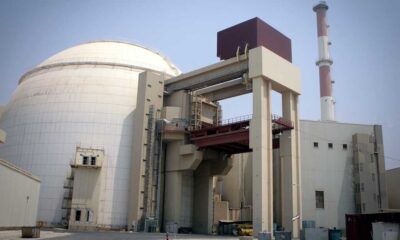
 Asia2 weeks ago
Asia2 weeks agoIran’s uranium enrichment program since 1979
-

 America2 weeks ago
America2 weeks agoBig Tech lobbies for a 10-year ban on state-level AI regulations
-

 Middle East2 weeks ago
Middle East2 weeks agoAn assault on the Axis of Resistance: The Israeli escalation against Iran and its impact on Palestine and Gaza
-

 Asia2 weeks ago
Asia2 weeks agoIran-Israel war: Why US discusses regional conflict with Pakistan
-
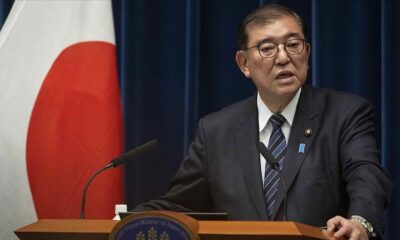
 Asia2 weeks ago
Asia2 weeks agoJapan diverges from G7, urging restraint in Israel-Iran conflict
-

 America2 weeks ago
America2 weeks agoIsrael’s nuclear arsenal used as a tool of blackmail, says expert
-
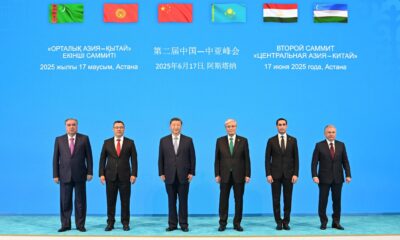
 Asia2 weeks ago
Asia2 weeks agoChina pledges aid and signs friendship treaty at Central Asia summit










